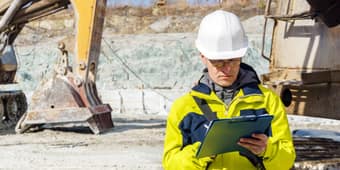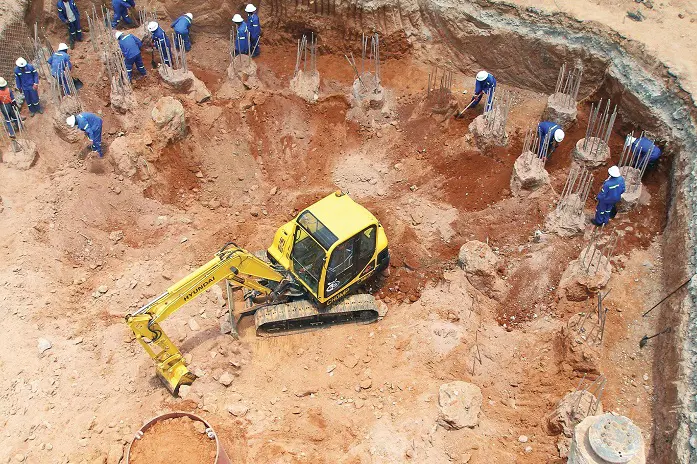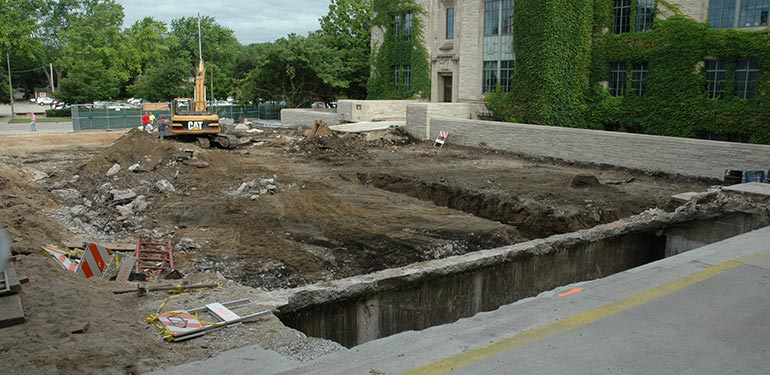The Advancement of Civil Consulting Engineers in the Modern Times
Wiki Article
An In-depth Summary of the Trick Responsibilities of Geotechnical Engineers in Site Characterization and Ground Enhancement Strategies for Design Solutions
Geotechnical engineers are integral to the successful implementation of design tasks, entrusted with the important obligations of website characterization and the application of ground enhancement methods. Their work involves an extensive evaluation of subsurface problems, using numerous screening approaches to identify dirt and rock homes. This fundamental understanding not just informs style choices but also alleviates prospective risks related to ground instability. As we explore the complex functions of these experts, it ends up being evident exactly how their know-how shapes the security and efficiency of engineering solutions. What details methods and analyses stick out in this vital discipline?Function of Geotechnical Engineers
Geotechnical engineers play a crucial role in the layout and building of infrastructure by examining the actions of dirt and rock beneath the surface - geotechnical eng. Their obligations encompass reviewing subsurface problems to educate style decisions that ensure structural stability and security. By carrying out comprehensive analyses of dirt residential or commercial properties, consisting of shear leaks in the structure, stamina, and compressibility, geotechnical designers offer crucial data that influences the selection of ideal construction products and methodsAlong with assessing soil mechanics, geotechnical designers are entrusted with recognizing prospective dangers such as landslides, sinkholes, and ground negotiations. Their experience aids reduce risks connected with these geotechnical sensations, thereby shielding both the atmosphere and public security. They likewise work together very closely with other engineering techniques, guaranteeing that geotechnical factors to consider are integrated into overall task layout.
Moreover, geotechnical engineers involve in the assessment of existing frameworks, providing suggestions for retrofitting and repair services when essential. Their detailed understanding of soil-structure interaction is essential for the development of sustainable facilities options. Overall, the function of geotechnical designers is integral to the effective awareness of building and construction tasks, ensuring they are risk-free, resilient, and certified with regulatory criteria.

Website Characterization Processes
Reliable site characterization procedures are essential for comprehending the subsurface problems that affect task design and execution. Geotechnical designers employ a systematic strategy to gather, assess, and interpret data concerning groundwater, rock, and soil characteristics. This procedure begins with a detailed review of existing literary works and archaeological site data, providing insights into previous website conditions and prospective obstacles.
Data analysis follows fieldwork, where engineers use geostatistical approaches to translate searchings for and develop geological models. Via persistent site characterization, geotechnical designers lay the groundwork for effective job execution, lessening unforeseen problems and maximizing source allotment.
Dirt and Rock Screening Techniques
While understanding subsurface problems is crucial, the choice of appropriate dirt and rock testing methods is similarly crucial for exact evaluation and design. Geotechnical engineers use a selection of screening techniques to review the mechanical and physical buildings of dirt and rock products.Laboratory tests, such as Atterberg limits, grain dimension my site analysis, and unconfined compressive toughness examinations, give essential data on dirt actions under different moisture problems and filling situations. These examinations assist figure out dirt classification and predict negotiation or shear strength qualities important for foundation style.
In-situ testing approaches, including Criterion Infiltration Examinations (SPT), Cone Infiltration Tests (CPT), and pressure meter tests, permit engineers to collect data directly from the ground. These methods use useful insights right into the soil's thickness, uniformity, and stratification without the requirement for considerable tasting.
Rock screening normally includes core tasting and research laboratory evaluation to assess buildings like uniaxial compressive strength and rock high quality classification (RQD) With each other, these soil and rock screening methods allow geotechnical designers to make enlightened decisions relating to site-specific challenges, making certain the security and stability of design solutions.
Ground Improvement Techniques
Ground improvement methods are necessary for enhancing the design buildings of soil, therefore enhancing its load-bearing ability and decreasing negotiation. These methods are critical in attending to obstacles provided by weak or bothersome dirts, which can substantially affect the security and resilience of frameworks.Various ground enhancement strategies are utilized, consisting of compaction, grouting, and dirt stablizing. Grouting, on the various other hand, includes infusing a fluid product into the ground to load spaces and boost soil cohesion.
Dirt stablizing incorporates a variety of approaches, from chemical ingredients to mechanical treatments, aimed at boosting the dirt's resistance to disintegration and contortion. Strategies such as lime stabilization or concrete blending change the homes of the soil at a fragment degree, boosting its total efficiency.
Significance of Geotechnical Evaluations
Geotechnical analyses play a crucial function in the planning and layout of engineering jobs, as they supply necessary info concerning the subsurface conditions. Understanding dirt residential or commercial properties, rock developments, groundwater degrees, and prospective geohazards is important for guaranteeing the security and security of frameworks. These analyses enable designers to make educated choices pertaining to site selection, style parameters, and construction techniques.
The value of geotechnical evaluations prolongs past preliminary task phases; they contribute in danger management and expense effectiveness. By identifying possible issues early, such as soil negotiation, slope instability, or excessive groundwater, engineers can design suitable mitigation techniques, decreasing the chance of costly hold-ups and structural failures. Additionally, these evaluations sustain compliance with governing demands and boost the sustainability of engineering techniques.

Conclusion
Finally, geotechnical designers are important to ensuring the security and security of engineering tasks with comprehensive site characterization and ground enhancement techniques. civil consulting engineers. Their methodical strategy to assessing subsurface problems, integrated with their referrals for effective ground adjustment, substantially improves dirt residential properties and load-bearing capacity. The experience of geotechnical designers not just facilitates educated task preparation however also makes sure conformity with regulations and promotes effective communication among stakeholders, inevitably contributing to successful design end resultsGeotechnical Learn More engineers play a critical function in the style and construction of facilities by examining the habits of soil and useful reference rock underneath the surface. By conducting detailed analyses of dirt residential properties, consisting of shear strength, compressibility, and leaks in the structure, geotechnical designers provide essential information that affects the selection of appropriate building materials and methods.
In enhancement to examining dirt technicians, geotechnical designers are charged with recognizing potential dangers such as landslides, sinkholes, and ground settlements. Geotechnical engineers use a methodical approach to collect, evaluate, and interpret data pertaining to groundwater, dirt, and rock features. By determining prospective issues early, such as dirt negotiation, incline instability, or extreme groundwater, designers can devise appropriate reduction methods, decreasing the likelihood of pricey hold-ups and structural failings.
Report this wiki page